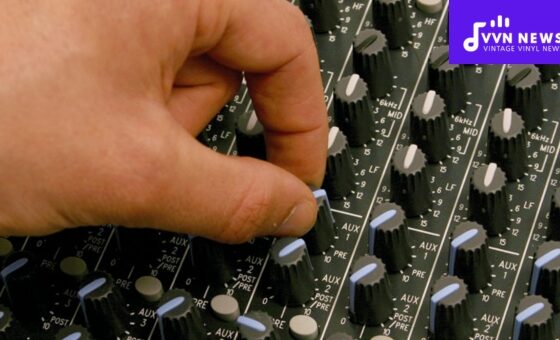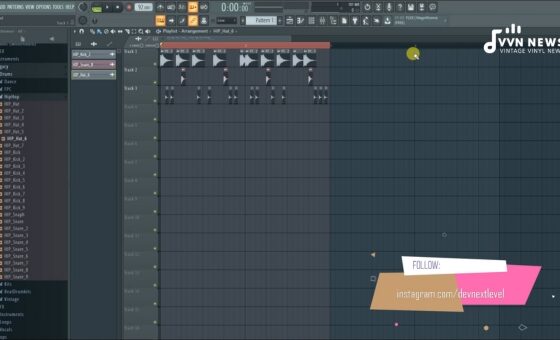Have you ever found yourself in the middle of an audio recording or podcast and realized a ton of background noise is swallowing your brilliant thoughts?
Offices, cafes, home studios – unwanted sound can sneak into your work no matter where you are.
Your pristine audio now echoes with a dog barking outside or the hum of your old air conditioner.
While some noises can be interesting, offering depth and texture to your track, others are irritating. This is where the fascinating world of noise gates comes in.
Let me tell you a secret that will undoubtedly change your life if you’re involved in any digital media creation requiring sound.
Enter the kingdom of Noise Gate – a behind-the-scenes hero, an unseen force that removes unnecessary clamor from your audio files.
Like a determined goalie in a thrilling soccer match, it always stands sentinel to ensure that only your wanted sounds make it to your final cut.
It might surprise you how much this technical superstar can improve the audio quality and clarity in any recording project.
What Is a Noise Gate?
A noise gate is an audio processing tool that controls unwanted background noise in audio recordings or live sound setups. It eliminates or reduces unwanted sound when an audio signal falls below a certain threshold.
The noise gate sets a threshold level, below which the incoming audio signal is considered background noise.
When the audio signal falls below this threshold, the noise gate suppresses or mutes the call, eliminating the unwanted noise.
Once the audio signal exceeds the point, the noise gate allows the signal to pass through unaffected.
Noise gates are commonly used in audio applications such as recording studios, live performances, podcasts, and broadcasting.
They help improve the clarity and quality of audio recordings by effectively reducing background noise and enhancing the overall sound.
Also Read: What Is Sidechaining? [5 Best Sidechain Compression Plugins]
How Does Noise Gates Work?

Noise Gates work on a simple principle: they control when to mute the audio signal and when to allow it to pass through.
Several vital parameters guide this process, and understanding what they are and how they function is essential to mastering the utilization of a noise gate.
Threshold
This is arguably the most critical parameter in operating a noise gate. The threshold denotes the level at which the gate opens or closes.
Any sound below this level gets segmented – your gate remains ‘closed.’ It only ‘opens’ when the signal exceeds this threshold.
Attack
Attack time defines how swiftly an open gate responds once a sound has exceeded the threshold level.
Essentially, it’s the speed at which your gate ‘opens.’ If set too swiftly, it might result in unnatural-sounding audio, too slack, and you may miss some crucial elements of your sound.
Release
The release time sets how long it will take for your gate to close once a sound falls below your threshold again.
Like with the attack time, setting it either too fast or too slow can lead to unnatural-sounding audio.
Hold
The hold phase indicates how long your gate will remain after the sound drops below the threshold. It helps prevent rapid gating if you have fluctuating signal levels around your point.
A perfectly set noise gate ensures that your primary input source (your voice in podcasts or instruments in music tracks) makes its way through unhampered while cutting off any unwanted background sounds.
Understanding these fundamental parameters is just half the battle.
Appropriate adjustments and constant fine-tuning would be needed to get great results based on different recording environments and scenarios.
For optimal use,
- Ensure not to set your threshold too high – it might cut into softer parts of needed audio.
- A slow attack setting may cause initial signal transients to be cut off.
- Too short a release time might lead to chatter or flutter in the audio signal.
- A too-long hold period can keep the gate open unnecessarily long after the wanted signal stops.
With constant practice and understanding of these parameters, noise gating can be a fantastic addition to your audio toolkit, ensuring improved sound quality in all future projects.
What are the Uses of Noise Gates?
Noise Gates are widely used in a multitude of audio projects. From producing crystal clear podcasts to high-quality music recordings, noise gates are your best bet to reduce or eliminate unwanted background noise dramatically.
It can remove low-level noise when not speaking into the microphone (like traffic noise, fridge hums, or air conditioner drones).
But more than just eliminating the ‘unwanted’ aspects from your project, a noise gate can also manipulate sounds in various ways and infuse greater depth and rhythm. Let’s delve deeper into how you can set up your noise gate:
Place Your Noise Gate Plugin As An Insert
When setting up a noise gate for audio manipulation, you might want to insert it directly onto the track where you want to shape your sound.
Placing it as an insert allows it to function now in a specific way rather than mucking around with all tracks simultaneously.
Set The Threshold
The Threshold is the critical setting in a noise gate. This control determines when the gate will open and let sound through.
Any audio signal louder than the threshold level opens the gate, while any audio softer will keep it closed.
Set The Attack
Attack refers to the speed at which your gate opens when a loud enough signal comes along and causes it to trip open.
Think of this as how quickly your gate responds.
Set The Hold
The Hold time is immediately after the attack phase ends – it tells the gate how long it should stay open even if levels drop below your threshold before resetting and preparing to activate again.
Set The Release
Like hold time, Release lets you control how quickly you want your ‘gate’ to close once levels get below our threshold setting again.
Set The Range
A unique feature that many modern noise gates offer is range control or depth control—also known as Range. This setting allows you to decide just how much the level reduces when your entrance is ‘closed.’
Set The Filters
Depending upon the model of your noise gate, you will have options to set up Filters. Using this control, you can determine which frequencies will cause the gate to trigger and open up.
Set The Lookahead
Lookahead allows a plugin to deal with audio that hasn’t even happened yet! Setting a lookahead allows the plugin time to anticipate when it’ll need to open or close.
Set The Sidechain
This option allows external sources to control whether our gate opens or closes. So instead of the audio track you’ve placed your gate on maintaining it, Sidechain Let another source indirectly affect it.
As a sound creator, director, or editor, don’t let unwanted disruptions compromise the integrity of your work. With knowledge about noise gates in your armory, take control and make all ambient distractions bow down!
Experiment with these settings and configurations – tweak until you decide what works perfectly for you. It’s your world – create your sound.
Also Read: What Is Gated Reverb? 2025 [How To Create Gated Reverb Drums]
Setting Up a Noise Gate

Setting up a noise gate might initially appear intimidating, but it’s pretty straightforward. Let me break down the steps for you.
These general, universal principles apply to almost all noise gate plugins.
- Place Your Noise Gate Plugin As An Insert: This step largely depends on your specific Digital Audio Workstation (DAW). Essentially, you would need to insert the plugin in your effects chain.
- Set The Threshold: The threshold is the level above which audio is allowed and below which it is gated or muted. It’s crucial to find the right balance here. Too high might cut off elements of sounds you want to keep; too low will let unnecessary sounds creep in.
- Set The Attack: The attack determines how quickly the gate opens once it exceeds the threshold. A faster episode opens quicker but may cause clicking noises with certain audio types, while a slower one might cut off initial transients.
- Set The Hold: The hold setting determines how long a gate stays open after surpassing your threshold before starting to close, regardless of input level.
- Set The Release: Release time indicates how long the tail end of an audio signal serves as a fade-out period after it drops below your set threshold.
- Set The Range: Range determines the extent to which sound below the threshold is reduced – partially or entirely.
- Set The Inputs/Filters: Filters help you by narrowing down specific frequencies that should be impacted by gating.
- Set The Lookahead/Curves/Ducking Controls: These nuanced settings aid in properly optimizing the gating mechanism based on specific characteristics of your audio source.
- High-Pass (HP) and Low-Pass (LP) Filters: These settings eliminate frequencies above or below a specified limit, thus helping the gate focus only on specific frequencies one may wish to control.
Remember, every audio source is different, so you may need to tweak these parameters accordingly. Be patient with yourself during this process! It’ll take time and practice to get the most out of your Noise Gate.
Noise Gates are just one piece of the puzzle for achieving a clean and professional audio mix.
A well-placed and adequately configured noise gate can drastically improve your audio clarity but don’t forget about other aspects of your mix, such as levels, equalization, and compression.
FAQs About Noise Gate
What is a noise gate used for in music?
A noise gate in music is used to reduce unwanted background noises like hiss and hum, thereby improving the recording’s overall sound quality and clarity.
Does a noise gate affect sound quality?
A noise gate can significantly enhance sound quality by eliminating unnecessary noise below the set threshold level.
Where do I place my noise gate in the signal chain?
The ideal position for your noise gate is early in the signal chain, right after your tuner and before any other effects.
Can I use a noise gate on vocals?
Absolutely. A noise gate can be used on vocals to erase low-level noises between phrases or sentences, ensuring a cleaner vocal track.
Are there different types of noise gates?
Yes, there are different types, like downward expanders, side-chain gates, and hysteresis gates, which serve specific purposes based on their unique properties.
Conclusion
Noise gating is a game-changer for those endeavoring for top-notch audio quality.
Whether you’re a podcaster wrangling with persistent background noise or an audio engineer striving to perfect a recording, noise gates are your reliable ally.
Remember, the optimal use of any tool comes down to understanding its dynamics, subtleties, and nuances.
Keep practicing with your preferred noise gate plugin, and get comfortable adjusting the threshold levels; you’ll soon realize its magical power in transforming your sound projects.








